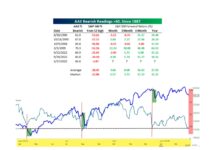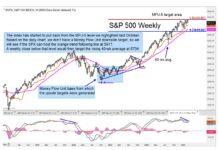 By Greg Naylor
By Greg Naylor
June was an eventful month, as the Supreme Court upheld Obamacare, Euro-zone members announced movement toward greater unity, and oil markets experienced tremendous volatility.
By the numbers:
Stocks & Bonds
After a dismal May for the U.S. stock market, June saw some recovery. International stocks (MSCI EAFE) continue to struggle with worries about slowing growth in Europe and China. The bull market continues for bonds, pushing yields ever lower.
| S&P 500 Total Return | MSCI EAFE | BarclaysAggregateBond | Unadjusted CPI | |
| June | 4.12% | 6.78% | .04% | -.12% |
| May | -6.01% | -12.08% | .9% | .3% |
| YTD | 9.48% | .07% | 2.37% | 1.58% |
| 2011 for reference | -2.11 | -14.22 | 7.84% | 3.38% |
Commodities & Currencies
In oil news, U.S. crude futures had an eventful month. After losing ground for most of June, U.S. crude prices rose 9.4% on the last trading day of the month. This was one of the biggest one-day increases in modern history. Even then, U.S. crude prices declined 1.8% for the month of June, settling at $84.96 per barrel. For the year, U.S. crude is down 14%, easing inflationary pressures. High prices at the pump are not likely a result of actual gasoline demand in the U.S. Daily U.S. gas consumption is almost 15% lower today than in January 2008, before the crisis. If this decline continues, we might see gas consumption this year dip to the same level it was in 2000. This, despite the fact that the country has added approximately 31 million vehicles and people in the past decade.
The U.S. dollar, meanwhile, after gaining 5.43% against a basket of currencies in May, declined by 1.79% in June. For the year, the dollar has gained 1.77% as global investors continue to identify the U.S. as a safe haven. The economy struggles in America, but the rest of the world does not have it any easier. In India, the rupee reached an all-time low in June of 57.3275 against the dollar. In plain English, that means inflation. May saw an annualized inflation rate in India of 7.55%, up from 7.23% in April. Manufacturing activity in China is also shrinking slightly, according to official estimates. These countries do not offer their unemployed workers 2 years of wages, as we do in the U.S.
Economy
The economy continues its slow recovery. GDP grew at an annualized rate of 1.9% for the first quarter of 2012, slower than the 3.0% growth of 2011. Unemployment is down from its recession-high of 10% in 2009, although its current reading of 8.2% is hardly cause to celebrate. The battle between inflationary and deflationary forces continues. As energy prices have declined, the CPI and PPI have both declined. The Producer Price Index (PPI), often seen as a leading indicator of price movement, declined 1% in May. The Consumer Price Index (CPI) for all items declined .3% in May (excluding volatile food and energy, it increased .1%).
The housing market is showing signs of improvement. According to the National Association of Realtors (NAR), the annual rate of existing-home sales in May increased 9.6% from May of 2011. In addition, the percentage of distressed sales (foreclosures and short-sales) as a portion of overall sales declined from 31% to 25%. This is all good news for a housing recovery, especially since distressed sales typically sell at a substantial discount, dragging down overall housing prices with them. The median existing-home sale price in May increased 7.9% from a year earlier, to $182,600.
Summary
The numbers compiled by economists and statisticians show an economic recovery, with slightly more good numbers than bad numbers. However, the recovery is uneven. Corporate profits remain near record levels, but individual Americans continue to struggle with unemployment, debt and declining real incomes. In addition, the AARP just released a survey which indicates that a fully 25% of baby boomers have spent their entire life savings since the financial crisis in 2008. The Federal Reserve can respond to bad news with renewed monetary easing, but with interest rates already near zero it no longer has meaningful ability to stimulate growth. At this point, the politicians are responsible for our economic growth or decline, both in the U.S. and around the world. Please be sure to vote this November for the correct candidate(s).
In a difficult economy, personal financial success depends more than ever on planning and patience. Of course, life evolves, and if you have had any changes in your personal goals or investment comfort level, please don’t hesitate to call or email so that we can talk and make adjustments where necessary. At this time, we are not recommending any changes based on the numbers reported here.
Data Sources:
www.standardandpoors.com – S&P 500 information
www.msci.com – MSCI EAFE information
www.cmegroup.com – NYMEX crude prices
www.fxstreet.com – U.S. Dollar performance
www.bloomberg.com – Developments in India, rupee and inflation
www.bea.gov – GDP numbers
www.bls.gov – CPI and PPI numbers
https://articles.latimes.com/2012/jan/17/business/la-fi-mo-gas-prices-20120117 – Gasoline numbers
About Greg Naylor: Greg is a partner and co-founder of Fiat Wealth Management, an independent financial advisory firm in Long Lake, Minnesota. He has been investing for over 7 years and enjoys sports, reading, singing, and spending time with family. Greg is a 2004 graduate of the University of Minnesota and lives in South Minneapolis with his wife Kat. Click here for more articles by Greg.
—————————————————————-
Twitter: @seeitmarket Facebook: See It Market
Any opinions expressed herein are solely those of the author, and do not in any way represent the views or opinions of his employer or any other person or entity.








